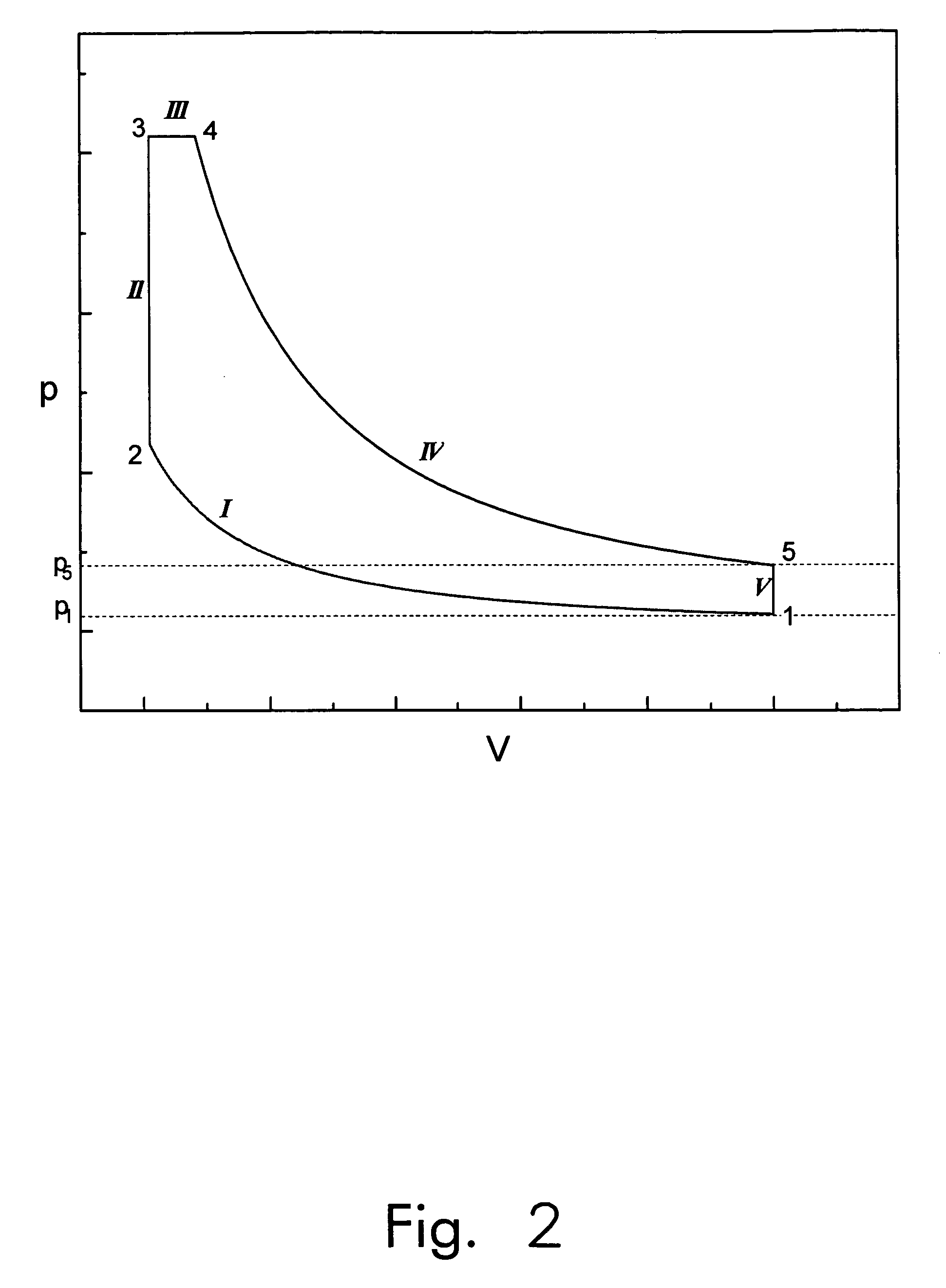Optimal heat engine
a heat engine and optimal technology, applied in the direction of connecting rods, bearings, shafts and bearings, etc., can solve the problems of inability to reduce cannot be conservative, and cannot have any effect on the efficiency of the system, so as to increase the efficiency of the heat engine
- Summary
- Abstract
- Description
- Claims
- Application Information
AI Technical Summary
Benefits of technology
Problems solved by technology
Method used
Image
Examples
Embodiment Construction
[0070]The heart of the invention lies in the realization that the presence of an adjunct conservative force in a reciprocating machine can be used advantageously to reduce the energy required of an inefficient source to drive it. In a conventional reciprocating heat engine, in which conservative forces arise from the displacement of a piston or other equivalently moveable member (such as the rotor of a rotary engine) due to change in volume of the working medium of the engine, this reduction is achieved by coupling a supplemental force to the piston over a range of its motion in such a manner as to counterbalance those forces. Without loss of generality, the counterforce may be viewed as a force that pushes the piston into the cylinder with the identical force as a function of position as the force with which the gas repels the piston out of the cylinder.
[0071]There are two conceptually general categories of coupling techniques that may be employed to effectively counter these press...
PUM
 Login to View More
Login to View More Abstract
Description
Claims
Application Information
 Login to View More
Login to View More - R&D
- Intellectual Property
- Life Sciences
- Materials
- Tech Scout
- Unparalleled Data Quality
- Higher Quality Content
- 60% Fewer Hallucinations
Browse by: Latest US Patents, China's latest patents, Technical Efficacy Thesaurus, Application Domain, Technology Topic, Popular Technical Reports.
© 2025 PatSnap. All rights reserved.Legal|Privacy policy|Modern Slavery Act Transparency Statement|Sitemap|About US| Contact US: help@patsnap.com



